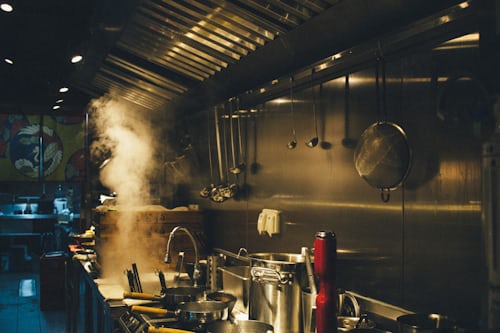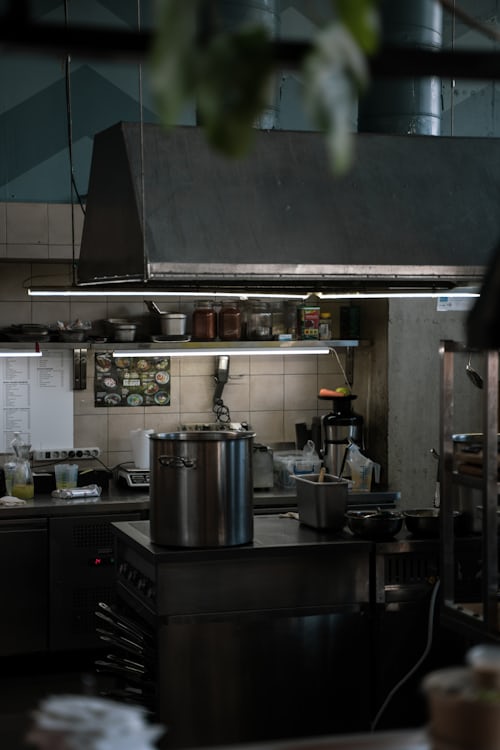What is a grease trap?

A grease trap would be any tank, arrestor, interceptor, or pit located above or below ground that allows grease to be cooled and separated from used water. Fat, oil, and grease expelled from food outlets are leading reasons for sewer system blockages. Grease will enter and accumulate in the sewers if a grease trap is not properly sized and maintained. Encrustation will form, obstructing the continuous flow of used liquid in the sewer system and causing it to flow down into your premises or other public places. Restaurants, coffee shops, and hawker centres are all examples of food-service establishments who need to have grease traps.
How does it work?
Step 1: When used liquid flows through the screen chamber, the coarse solids are removed.
Step 2: At the strainer bucket, smaller solid particles in used water are removed.
Step 3: As the used liquid converges and flows around the outer ring chamber, less high-density fat, grease, and oil are separated.
Step 4: Higher-density remnant solid particles sink to the outer ring’s bottom.
Step 5: Through water displacement, used fluid moves through the inner ring chamber and is expelled into the sewage system via the outlet pipe.
How is the installation process?

When configuring a grease trap, keep the following in mind:
a) Grease traps are utilised to pre-treat only culinary liquid from the kitchen and food preparation area. Used water from restrooms and other sanitation facilities drain lines (private sewers) that do not serve the food preparation area must be hooked up to the sewer system and avoid the grease trap.
b) Grease traps must be installed in an easily accessible location for maintenance. A properly placed grease trap can help to avoid health risks and other general populace health hazards.
Why is maintenance needed?
Getting Rid of Bad Smells
Fats, oils, and grease (FOG) begin to decompose as they pile up in your grease trap. As a result, a rancid odour may be detected by your customers and employees, even from underground traps. Worse, foul odours may indicate a health risk, as dirty grease traps are a place where bacteria and mold can thrive.
Saving Money on Cleaning and Repairs
FOG coagulates into a thick, hardened mass as it accrues in a grease trap. The more FOG in the trap, the tougher the mass becomes, making cleaning and removal extremely difficult. Backwash can be caused by an overflowing or malfunctioning trap. In an instant, your company’s floor could be flooded with foul wastewater, contaminating your products, discouraging your employees, and driving away customers.
Controlling Pollution

When your grease trap creates backwash or any other damage, your business isn’t the only one that suffers. The wastewater could contaminate the earth with toxins and rotten food particles if it spreads into the surrounding areas. While raw sewage may appear to be nothing but dirty water, it is toxic and harmful to natural environments and wildlife.
Fortunately, these unfavourable consequences of poor grease trap upkeep can be prevented simply by maintaining the cleanliness and upkeep of your traps by using kitchen grease trap cleaning in kl.